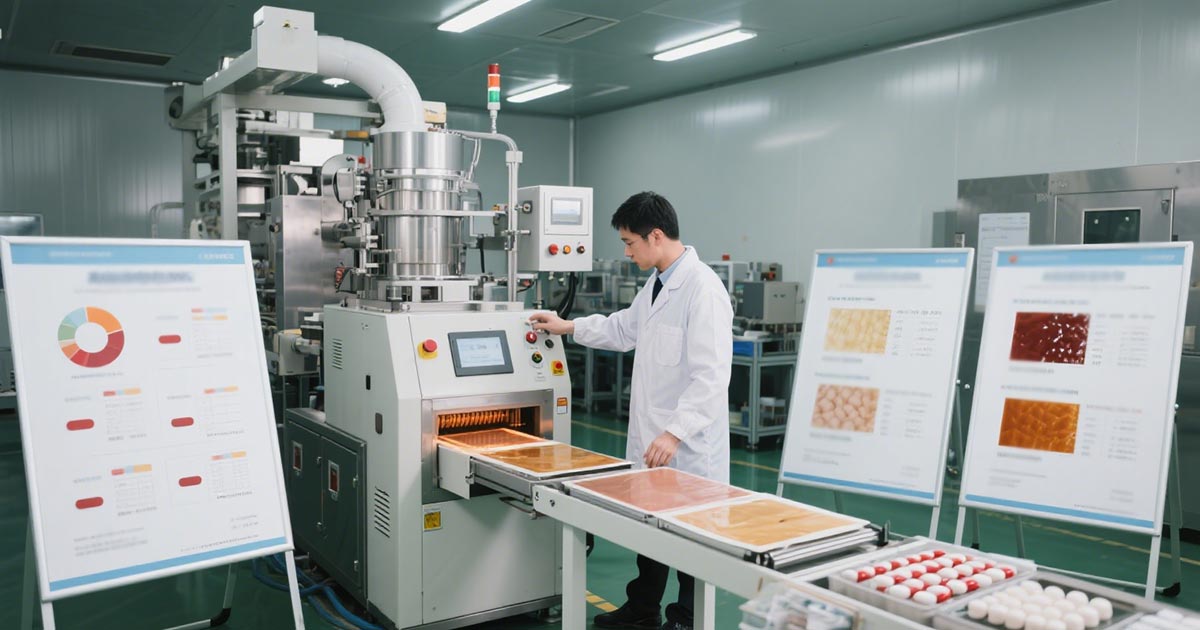
Efficient Coating Machine Hot Air Temperature: Coating Film Drying and Appearance Quality
In pharmaceutical manufacturing, tablet coating improves stability, controls drug release, masks taste, and enhances appearance. A key factor influencing coating quality is the hot air temperature inside the coating machine. Proper temperature control ensures uniform drying and a high-quality tablet finish.
Importance of Hot Air Temperature in Tablet Coating
Hot air temperature affects the evaporation rate of solvents or water in the coating solution.
Too low: Slow drying leads to sticky tablets, uneven coating, and longer production times.
Too high: Rapid drying causes defects like cracking, peeling, or rough surfaces.
Achieving Optimal Coating Drying
Effective drying balances hot air temperature, airflow, and coating spray rate. The temperature must evaporate solvents steadily without damaging coating materials or tablets. Typically, inlet air temperature is set within a controlled range tailored to the formulation and equipment.
Impact on Tablet Appearance
Proper temperature control produces a smooth, glossy, and uniform coating that improves tablet aesthetics and brand image. Poor control can cause discoloration, blistering, or rough textures, reducing consumer acceptance.
Best Practices for Hot Air Temperature Management
Monitor temperatures accurately using sensors for inlet and outlet air.
Adjust temperature gradually through different coating stages.
Consider product sensitivity, especially for heat-sensitive APIs or coatings.
Maintain equipment regularly to avoid airflow blockages and temperature fluctuations.
Conclusion
Controlling hot air temperature in tablet coating machines is essential for uniform drying and superior tablet appearance. Optimizing temperature settings based on formulation and equipment ensures consistent quality, efficiency, and product appeal.
